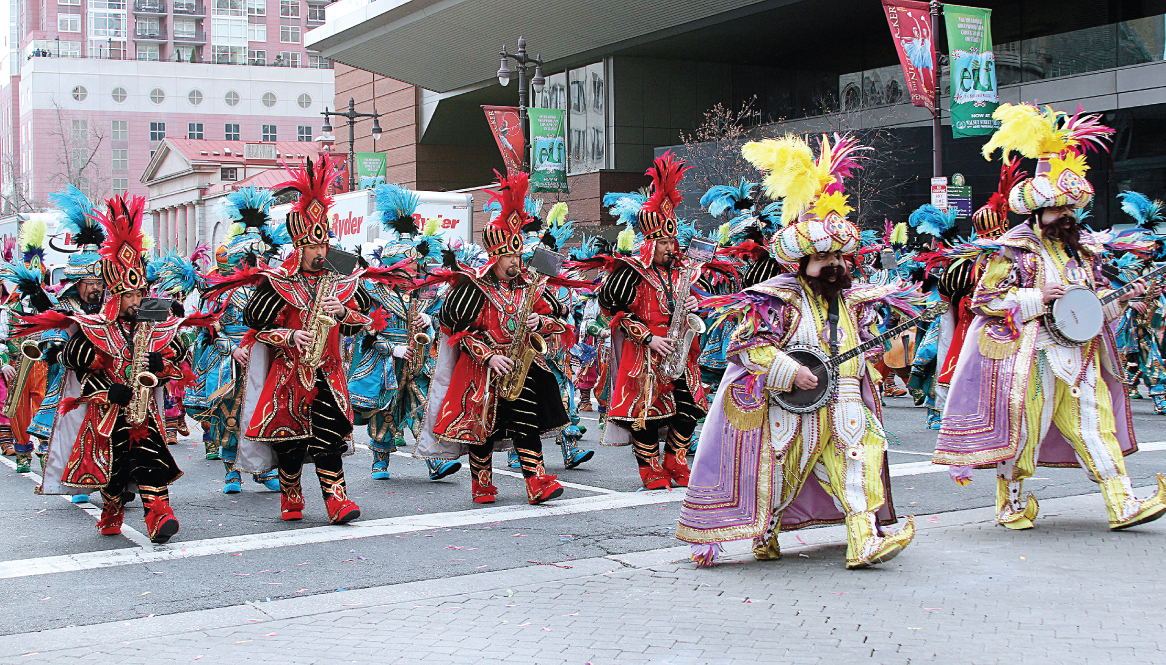
Mummers to bypass South Philly? Say it isn’t so!
There may be nothing more emblematic of Philly than the New Year’s Day Mummers Parade down Broad Street, from Oregon Avenue in the heart of South Philly to City Hall.
MORE IN THIS SECTION
There may be nothing more emblematic of Philly than the New Year’s Day Mummers Parade down Broad Street, from Oregon Avenue in the heart of South Philly to City Hall. All of us have memories of watching the extraordinarily garbed ordinary Philadelphians strutting their stuff on what we will eternally swear was the coldest, or warmest, or rowdiest day that it has ever been presented.
Now, we hear, the Mummers have proposed altering the parade route so it skips South Philly. Instead the parade would originate at City Hall and go to Washington Avenue, just barely at the edge of South Philly — the neighborhood most responsible for keeping the tradition alive. For a group (and a city) that is all about traditions, this proposed change is a mighty big deal.
Tom Loomis, the president of the 17-member Philadelphia String Band Association, admitted as much in an interview with the Philadelphia Inquirer, and spoke a bit about how getting the competition out of the way at the beginning rather than the end will restore a sense of spontaneity to the parade, and also encourage more interaction and participation along the parade route.
That rationale is laudable, in our estimation. We have memories of bygone years when those on the sidelines would step in to strut a few yards alongside members of the comic division and for a few minutes erase the gulf between spectator and participant. It’s so Philly — and we love, and miss, this aspect of the parade.
What is less laudable is the other rationale — the one the Inquirer’s Chris Hepp is at pains to elucidate: “the proposed change seems in part a result of demographic shifts the city has undergone. South Philadelphia once was home to large populations of migrants from Ireland and Italy, who produced both Mummers and crowds along the route. Those populations have thinned and been replaced by new immigrant groups — Asians and Hispanics — with fewer ties to the parade.”
We’re not keen on the distinction Hepp has created by calling one set of Philadelphia residents “migrants” and another set “immigrants,” but he does prompt questions as to why the newer immigrant groups who form such a large part of the fabric of today’s South Philly aren’t a large part of the Mummers parade as well — as performers and spectators.
The Mummers Parade isn’t particularly tied to either Italian or Irish tradition. In fact, according to PhillyMummers.com, “the tradition of Philadelphia Mummery started in the late 17th century” — the first Italian immigrants to our city didn’t arrive until the 18th century, while the Irish immigrant population boom was in the mid-19th century. The parade has undoubtedly acquired and developed special significance for both ethnic groups since it became official in 1901, and part of its association with South Philly has been because Italians and Irish have built community through generations of participation in the divisions and brigades.
Both Latinos and Asians have long traditions of celebratory parades with parallel sorts of extravagant costuming and mummery (in fact, we did a photo feature in January of this year about the similarities between the Mummers Parade and the Carnaval de Puebla “San Mateo Carnavalero” which takes place the last week of April or the first week of May every year), so where is the disconnect? Why move Philly’s signature parade out of its traditional neighborhood without first making a concerted effort to reach out and engage those who still live there? To enlist them in this parade, precisely the way earlier Mummer groups and clubs must have done it — by bridging languages and cultural differences to invite new blood and new energy into a tradition none want to lose?
What a grand thing that would be, to see Latino and Asian immigrant groups on the floats, in among the comic and fancies and string bands of our city’s most iconographic parade, as it made its way down Broad Street.
Now, that would be something to truly strut about.






LEAVE A COMMENT:
Join the discussion! Leave a comment.